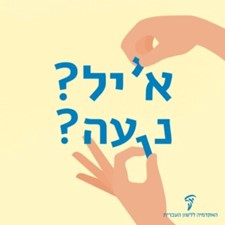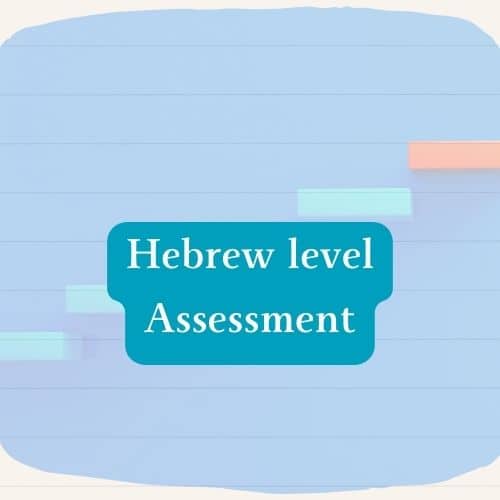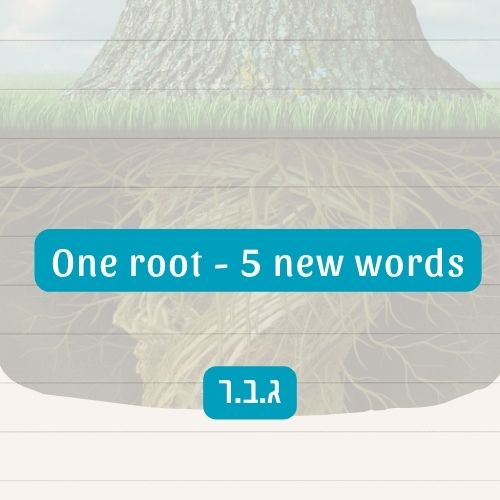Here are some common “mistakes” that everyone has during the process of learning Hebrew, in a random order. If you have them too, it means you are on the right path.
#1 – Is it male or female?
Hebrew is a genderic language, in which each object (and basically EVERYTHING) has a gender. Is there a logic behind the decision that a table is male, while a door is female? not necesseraly. It is very confusing for someone that learns the language (it’s not like you can look under the “underware” of a table to make sure…). So what can you do? Just be patient. It will slowly penetrate. Also, in a fluid-gender era, it might even be an advantage, to mix around a bit.
#2 -To Yud or not to Yud?
Well, for the tiniest letter in the Hebrew Alphabet, Yud is definately a trouble maker, as it is not consistent. Sometimes when the is “ee” sound, there’s Yud, but sometimes not. Why is it so confusing? Because Hebrew has two ways of writing: with “Nikud” (in which there is less need for Yud) and without. Once the Nikud is missing, sometime the letter Yud is just added to emphasize the sound but is not originally required. This little fact creates a lot of confusion, also for native speakers. Even the Hebrew Academy is constantly changing the rules about it. In other words, ok, sometimes it’s a mistake to add Yud or forget it, but this mistake makes a lot of sense as it is truely complicated. If you ask me, just feel free with Yud and don’t stress about is it missing or not. like everything else it will make more sense over time, or you will just get used to it.
In private names, btw, people can decide if they want one Yud, two or none. Also with Vav.

#3 -Words from English are the hardest
Try to read this: ניו-יורק
Were you a little stuck when reading it? Well, maybe not, but most of the students are. It says: “New-York” (mostly I hear “oh…” after saying this).
How about this word: וונדר וומן?
It says… Wonder Woman. Did you succeed. If you did, well done. As I said, for most students it is not easy AT ALL. Double Vav can be “W” and also “V”. But here it actually should be triple Vav, only that it’s not possible in Hebrew. It will get better over time, but don’t panic if these words are especially hard for you.
#4 -how can I read it if there are NO VOWELS?
Yes, you are right… you can’t read it unless there is Nikud or if you already know the word. There are basically no shortcuts. Once you heard the word you can read it correctly. If it’s a new word you might be right, but you might also be wrong, and trust me – it is not your “fault” but the “fault” of the modern Hebrew. Of course there are repetetive structures that can help, but the best way to know is just… to know. Which requires time and exposer to the language. But let’s agree that YOU are not the problem. Even google Israel are having hard time training there robots to read Hebrew on google translate, for example, for the exact same reason – no vouls, so there’s no way to know the sound if two words look the same.
#5 -ח/כ, ט/ת, ו/ב, ק/כ, א/ע, ש/ס
What are all the letters here? All of these pairs are letters that sound just the same! It is frustrating if you learn Hebrew because no matter how hard you try and which direction you look at if from – they SOUND THE SAME.
In the ancient Hebrew there were sound differences between it all, but nowadays the differences disappered, although the written format remained the same to reflect the origin of the word and the root. It creates a real difficulty among Hebrew speakers when writing as it is a matter of visual memory and not vocal. A lot of Israelis are also confused with all of these letters, and actually even in the ancient days of the Talmud and Mishna the sages switched between ס (samech) and ש (sin) and researchers are still debating what was the original sound of ש as it disappeared long time ago.
To conclude, again, it is not your fault. It’s a “defect” of the modern Hebrew that requires time and practice till it penetrates.





